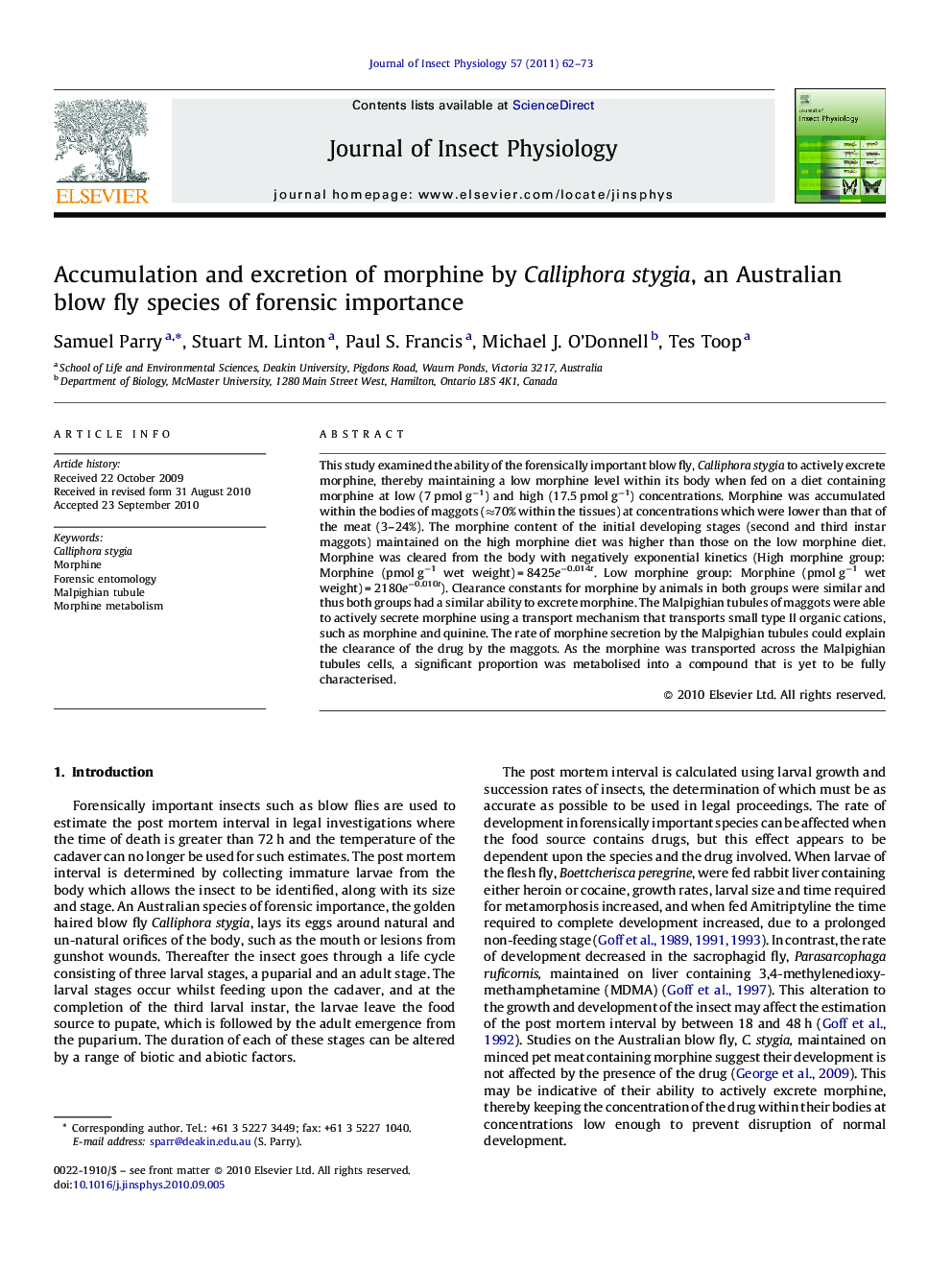| Article ID | Journal | Published Year | Pages | File Type |
|---|---|---|---|---|
| 2840965 | Journal of Insect Physiology | 2011 | 12 Pages |
This study examined the ability of the forensically important blow fly, Calliphora stygia to actively excrete morphine, thereby maintaining a low morphine level within its body when fed on a diet containing morphine at low (7 pmol g−1) and high (17.5 pmol g−1) concentrations. Morphine was accumulated within the bodies of maggots (≈70% within the tissues) at concentrations which were lower than that of the meat (3–24%). The morphine content of the initial developing stages (second and third instar maggots) maintained on the high morphine diet was higher than those on the low morphine diet. Morphine was cleared from the body with negatively exponential kinetics (High morphine group: Morphine (pmol g−1 wet weight) = 8425e−0.014t. Low morphine group: Morphine (pmol g−1 wet weight) = 2180e−0.010t). Clearance constants for morphine by animals in both groups were similar and thus both groups had a similar ability to excrete morphine. The Malpighian tubules of maggots were able to actively secrete morphine using a transport mechanism that transports small type II organic cations, such as morphine and quinine. The rate of morphine secretion by the Malpighian tubules could explain the clearance of the drug by the maggots. As the morphine was transported across the Malpighian tubules cells, a significant proportion was metabolised into a compound that is yet to be fully characterised.
Graphical abstract.Figure optionsDownload full-size imageDownload as PowerPoint slideResearch highlights▶ Calliphora stygia accumulates morphine into its body. ▶ Morphine is secreted from the haemolymph by the Malpighian tubules. ▶ This secretion is an active process. ▶ This process keeps morphine in C.stygia at low levels.
